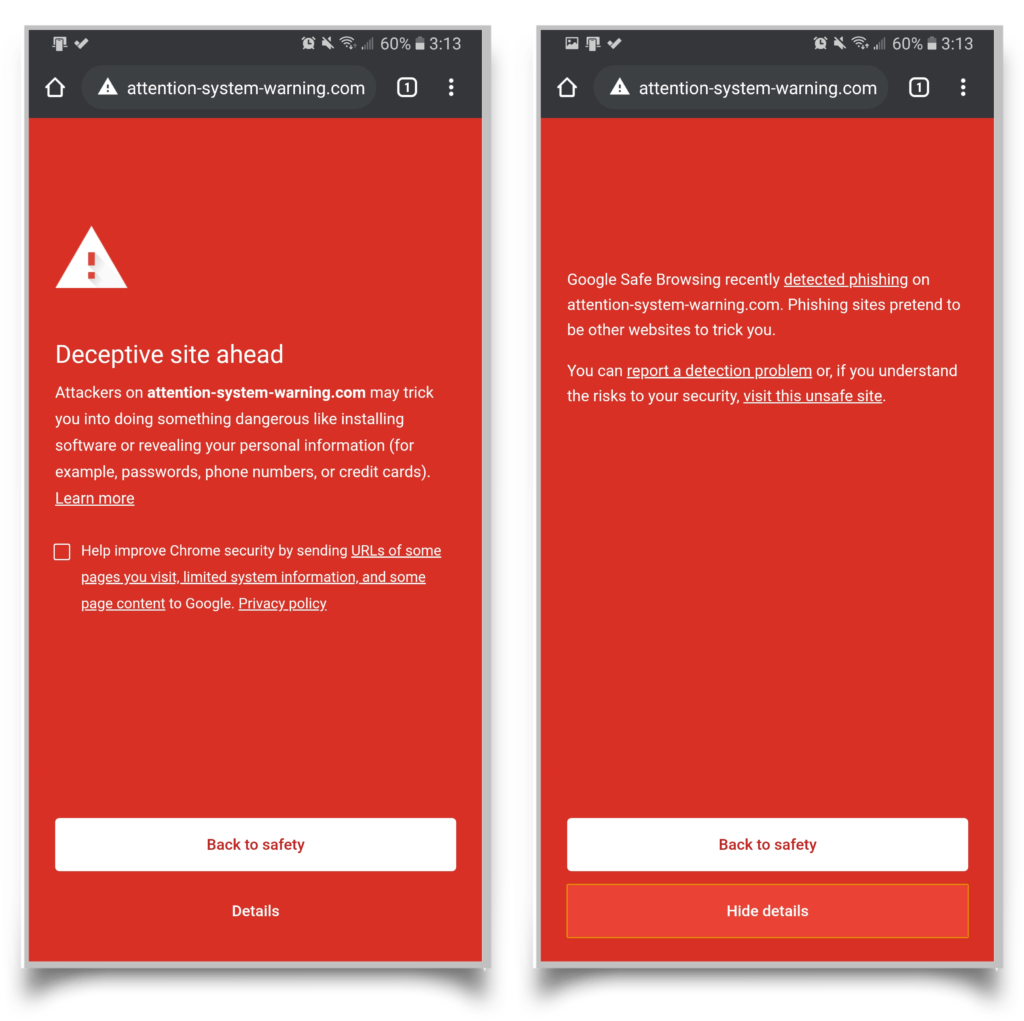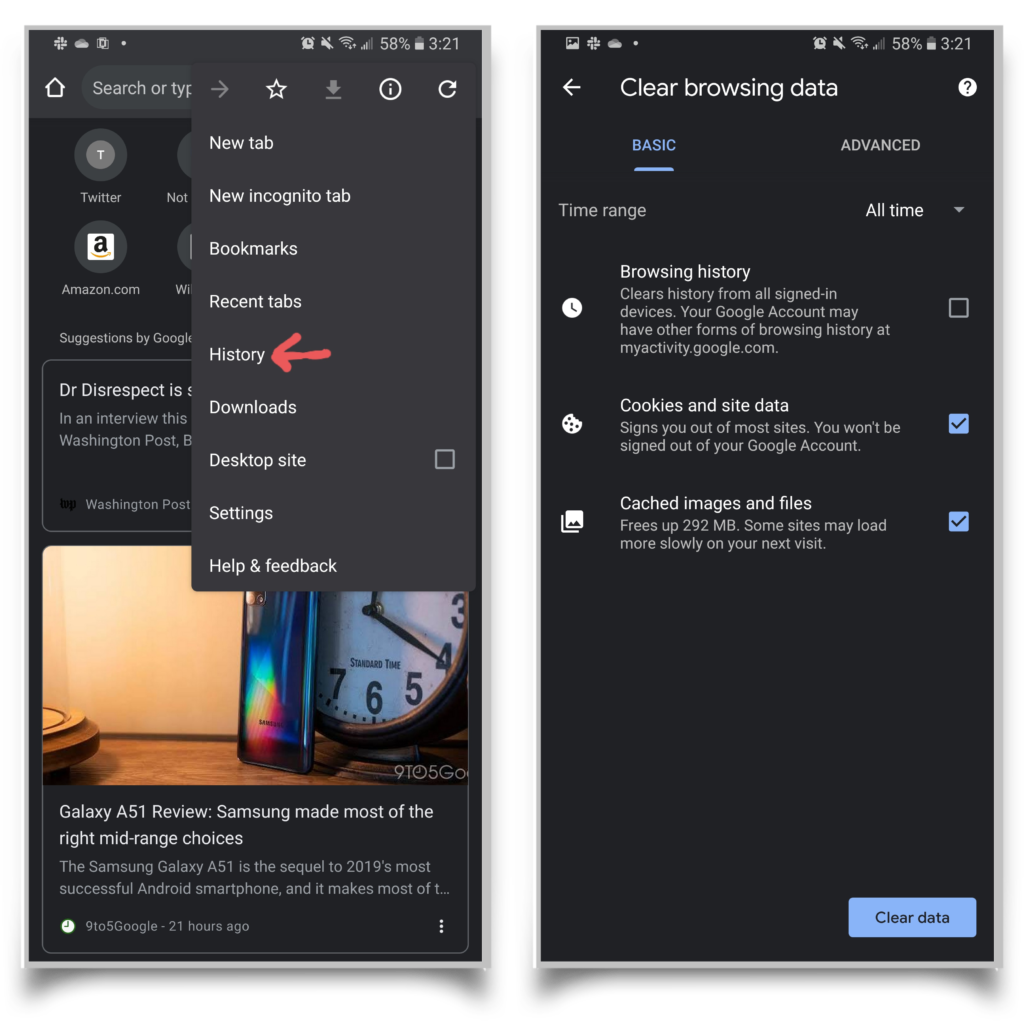Android is one of the most well-known cell phone operating systems. Unfortunately, it's popularity makes your Android device one of the most targeted devices on the planet for a virus attack. We frequently hear about new viruses that could potentially wreck havoc on your device. In this article, I'll explain how an Android can get a virus and show you proactive steps you can take to prevent it from happening to your phone!
What Is A Virus?
A virus on a Android device is known as malware. Malware is software that's designed to attach itself to your device. When it does, it performs a hostile takeover. Typically, malware tries to secretly control your device, steal your personal information, or even take your money if any credit cards or banking apps are hooked up to your phone.
How Does An Android Get A Virus?
There are a few different ways an Android can get a virus. Most of the time, users don't even realize that it has happened!
Unprotected Websites
Visiting unsafe websites without virus detection is a common way malware can infect an Android. Fortunately, Google has done a great job to help protect Android users.
They've developed Google Safe Browsing, which will look for malware and other suspicious activity on websites. If you attempt to visit an unsafe website in Google Chrome, you'll receive an alert on your phone recommending that you avoid the site.
Downloading Bad Apps
Most of the apps available in the Google Play Store are vetted to make sure they're safe to download. However, Android users run into malware risks when they begin downloading apps outside of the Google Play Store. These apps haven't been vetted, so it's tough to know where or not you can download and use them safely.
Apple users don't have to deal with this problem. The only apps you can download on an iPhone, iPad, or iPod are approved by Apple. The vetting process to get approval for the App Store is very thorough, which prevents bad apps created by nefarious developers from getting through.
Email Scams
Similar to a computer, a emails can contain viruses that become attached to your Android when you open them. Fortunately, most email platforms do a good job of filtering out dangerous emails into the spam folder.
If you open an email that looks suspicious, don't click on any of the links in the email. They could direct you to unsafe website like the ones we mentioned earlier in this article.
While not a virus, phishing is a common email scam that can be used to steal your password. Never type your username or password into a website without checking the URL first to make sure that it is the site that you expect. Phishing scams pretend to be the site you are looking for, like Instagram or Twitter, and trick you into typing in your login information so that the scammers can gain access to your account.
Common Symptoms Of An Android Virus
Do you believe your Android has a virus? Here a some symptoms to look for:
- Your apps are crashing — a lot.
- An unusually high rate of data usage, which may indicate a hidden app is running on your phone without your knowledge.
- The battery is draining much faster than usual.
- Your phone is constantly overheating.
- Unauthorized charges on your Google account or a card saved on your phone.
I Think My Android Has A Virus. What Can I Do?
If your Android device is infected with a virus, there are a few things you can do to try and remove it.
- Clear your browser’s caches.
- Uninstall any bad apps.
- Factory reset your Android.
Clear Browser Caches
Clearing the cache in the web browser you use on your Android will clear out any nefarious cookies and other stored data.
To clear the cache in your Chrome browser:
- Open Chrome.
- Tap More (look for the three vertically aligned dots).
- Tap History.
- Tap Clear Browsing Data.
- Tap to check off the boxes next to Cached Images and Files and Cookies and Site Data.
- Tap Clear Data.
Uninstall Bad Apps
The best way to fix a problem caused by a bad app is to delete the app on your Android.
To delete an app on your Android:
- Open Settings.
- Tap Apps (your device might say Application Manager).
- Tap on the app you want to uninstall.
- Tap Uninstall.
Factory Reset
A factory reset is the last step you can take to eradicate a virus on your Android. This reset will erase all the data on your Android to factory defaults, so you'll want to save a backup first.
To factory reset your Android:
- Open Settings.
- Tap System.
- Tap Advanced
- Tap Reset Options.
- Tap Erase All Data.
- Tap Reset Phone. You may be prompted to enter your password, lock pattern, or PIN number.
After the factory reset is complete, your Android will restart itself.
Is There An App For That?
While using the precautions we mentioned above will limit the likelihood your Android gets a virus, there are also several apps that can be downloaded to scan and protect your device.
When choosing an anti-virus app, make sure you do so from the Google Play Store. Some of the top anti-virus apps available are Bitdefender mobile security, Norton and Sophos.
A Clean Bill Of Health!
You now know everything you need to about Android viruses and how to avoid them. Make sure to share this article on social media with the Android fans you know! If you have ever experienced a virus on your Android, we’d love to hear about your experience in the comments section below!


